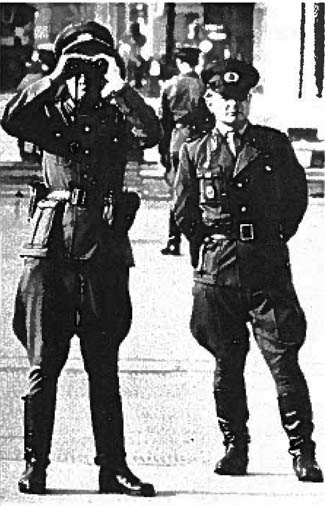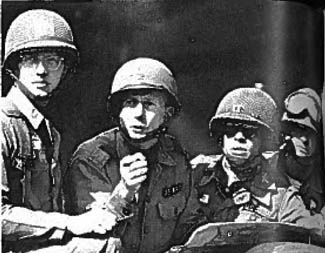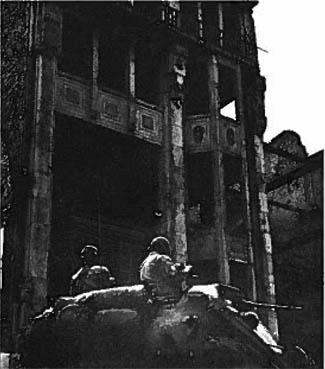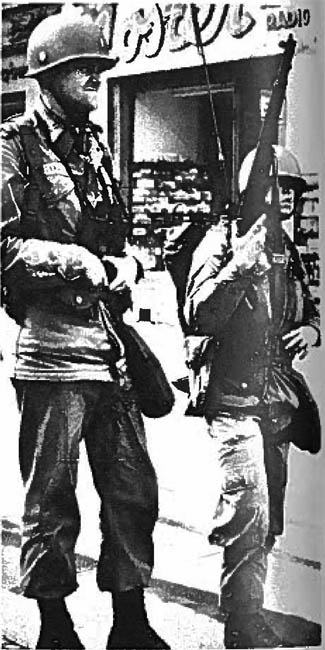Fulfilling a pledge to free world allies, the U.S. Army stands firm
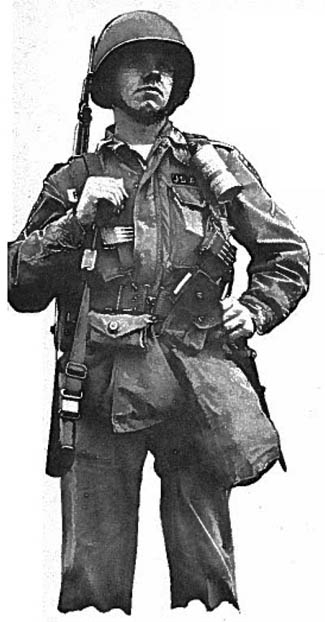
On guard at Friedrichstrasse, soldier carries live ammunition |
DESPITE barriers of concrete block and barbed wire hastily emplaced on 13 August by the East German Communist regime, the beleaguered City of West Berlin remained invincible in Its determination — an oasis of freedom in an agitated Communist sea, Propaganda barrages and water cannon failed to dampen the spirit of its citizenry. AN IMPORTANT element in sustaining the city's unflagging spirit was the back-up provided by the U.S. Army. The Berlin garrison was strengthened by moving up the 1st Battle Group, 18th Infantry; alert troops were positioned to counter any aggressive move. The animating purpose was epitomized by President John F. Kennedy in a radio-television report to the Nation: "We cannot and will not permit the Communists to drive us out of Berlin, either gradually or by force. For the fulfillment of our pledge to that city is essential to the morale and security of West Germany, to the unity of Western Europe, and to the faith of the entire free world." FOLLOWING are scenes of the U.S. Army responding to the Communist challenge on the front lines of freedom: |
East Berlin police stand by one of their "water cannon" at a Berlin border.
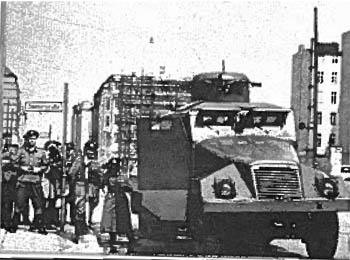
Sign, armed guards, the ominous wall serve to dramatize division of city.
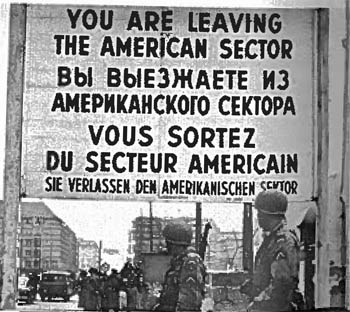
The Iron Curtain clangs down as Communists mount barbed wire on masonry wall that seals off East Berlin.
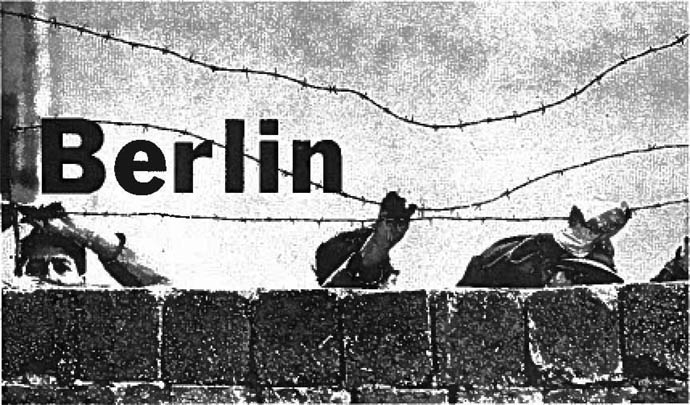
 |
Amid the murky dampness of a drizzly down, poncho-clad … |
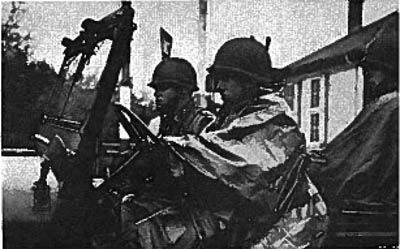
… members of the 1st Battle Group, 18th Infantry, begin move to Berlin …
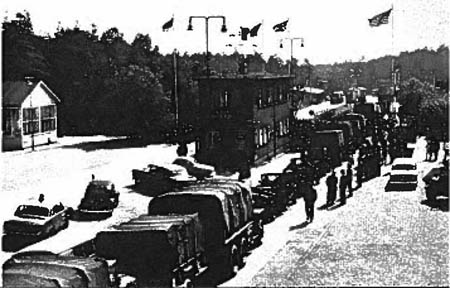
… and here await their turn to cross from Allied check point to Soviet Area at Helmstedt.
Binoculars of East German police sweep American area at a Berlin crossing point. |
Colonel Glover Johns directs men of 18th Infantry on alert after arriving in Berlin. |
Tanks reinforce infantry units in the troubled area. |
Officer and enlisted man keep wary eye on movements across border zone. |
Ammunition for the inner man— guard at border point gets a hot meal. |
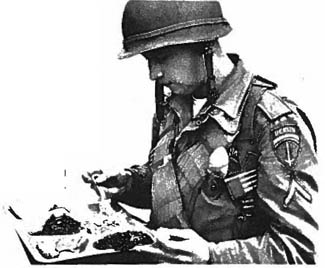 |
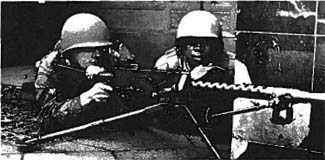 |
Light machine gun is set up by 6th Infantry members in shelter of doorway near border of divided city. |
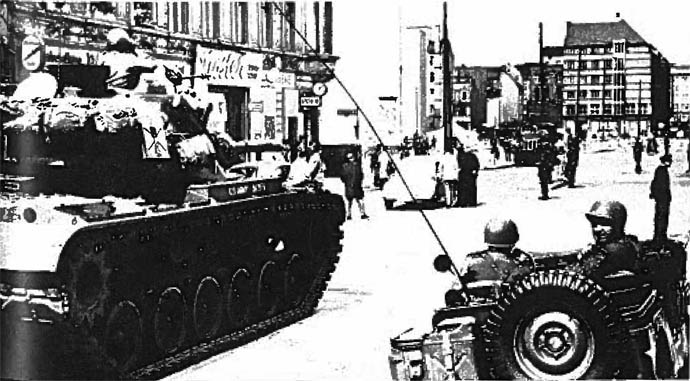 Commander of a Patton tank of Berlin Command's 6th Infantry scrutinizes activities of an East German armored car across the Friedrichtstrasse entrance to East Berlin.
Commander of a Patton tank of Berlin Command's 6th Infantry scrutinizes activities of an East German armored car across the Friedrichtstrasse entrance to East Berlin.
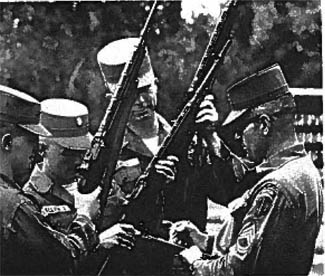 |
Trio from Co. D, 2nd Battle Group, 6th Infantry, receive new M-14 rifles. |
| Three of six West Point cadets who entered Berlin with 18th Infantry discuss experiences. | 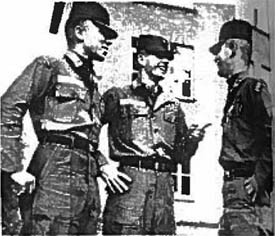 |
 |
Cheering throngs line route as 18th roll into Berlin near the bombed ruins of Kaiser Wilhelm Church. |
 On a trip that helped raise morale of West Berliners, Vice Presciently B. Johnson inspects a portion of U.S. Berlin Command, not far from Soviet Zone.
On a trip that helped raise morale of West Berliners, Vice Presciently B. Johnson inspects a portion of U.S. Berlin Command, not far from Soviet Zone.
 |
The Army Digest article above is a supplement to Berlin in Early Berlin-Wall Era CIA, State Department, and Army Booklets, which covers the period from 1958 to 1966, spanning the critical year in which the Wall was built: 1961.
These booklets have a historical value that is greater than the sum of the individual booklets in isolation. The booklets all represent three different perspectives of Berlin: practical, rhetorical, and pragmatic.
|
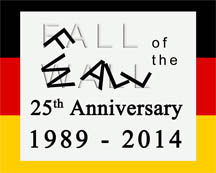 2014 is the 25th Anniversary of the Fall of the Berlin Wall
2014 is the 25th Anniversary of the Fall of the Berlin Wall
While you are here, check out these other interesting links:
The OFFICE OF THE U. S. HIGH COMMISSIONER FOR GERMANY, BERLIN published a booklet entitled A Survey of Berlin on JULY 1, 1950.
Berlin in Early Cold-War Army Booklets. This is a reprint of a series of six army booklets on Berlin, covering the period from 1946 to 1958. The booklets are written from a single institutional viewpoint, that of the United States Military Command in Berlin. When read in parallel, the booklets create a sense of living history, because, while they cover the same topics of interest about Berlin, their coverage of these topics changes as the series progresses, and you can see the political relationships of the time change before your eyes.
The feature article in the May 1959 issue of Army Digest was on Berlin. Follow me to read it.
Berlin in Early Berlin-Wall Era CIA, State Department, and Army Booklets. This is a reprint of three booklets that the historical context of The Day Before the Berlin Wall. They cover the period from 1958 to 1966, spanning the critical year in which the Wall was built: 1961.
The August 1969 issue of Army Digest ran an article on the Berlin Duty train.
Also by this author: three award-winning Berlin novels:
Voices Under Berlin: The Tale of a Monterey Mary

